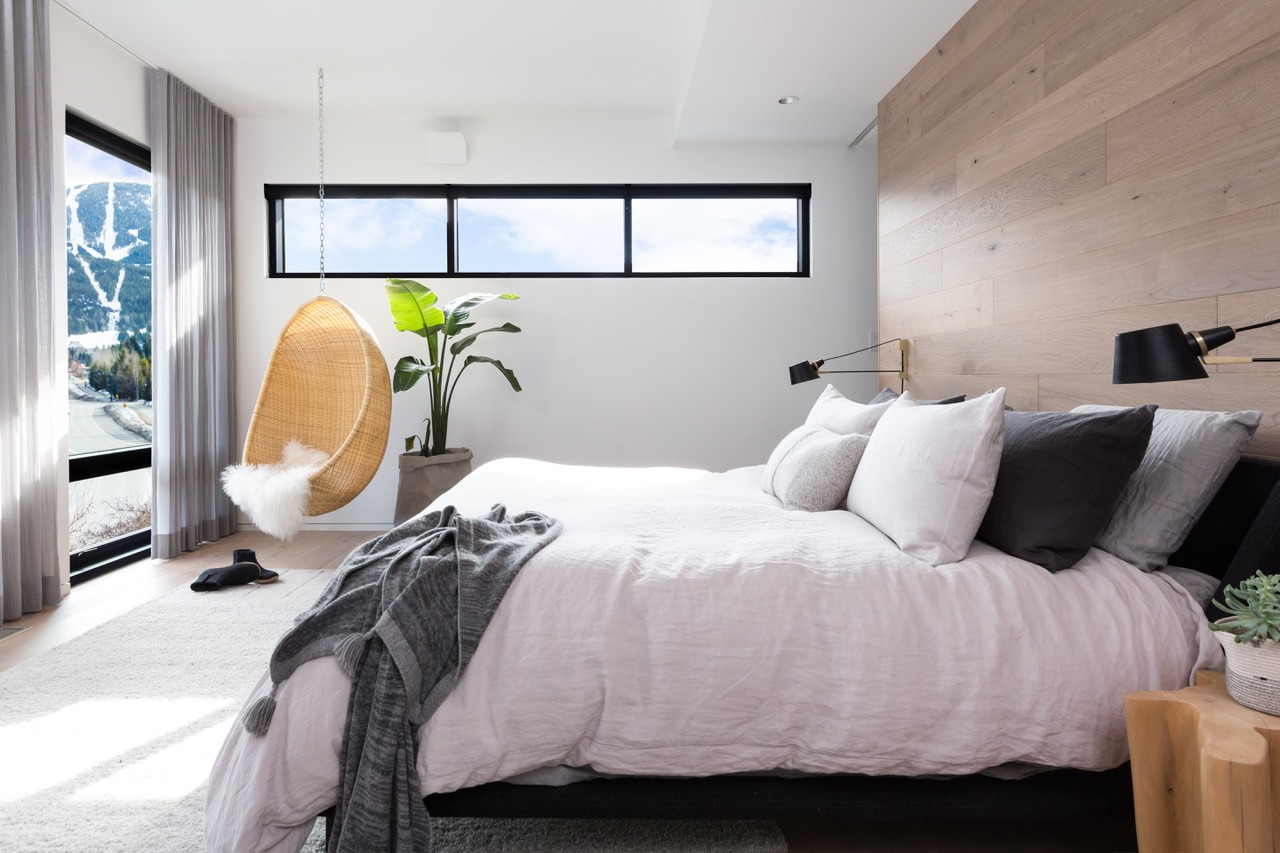If you’ve felt the urge to nest lately, you’re certainly not alone: with all the uncertainty and anxiety in the air right now, it seems like we’re all craving cozy, calming spaces that will help us relax and recharge. Sure, a beautiful bedroom might not be the answer to all the world’s problems, but it’s at the least the place to start for a good night’s sleep—so we tapped a trio of local designers to share their tips for upgrading your sleeping space into a dreamy hideaway.
Keep it neutral
Anything attention-grabbing should be saved for another design project. In the bedroom, it’s about cultivating calm. “Anything that distracts you is something that impedes you from relaxing and eventually falling asleep,” says Jamie Deck of Shift Interiors.
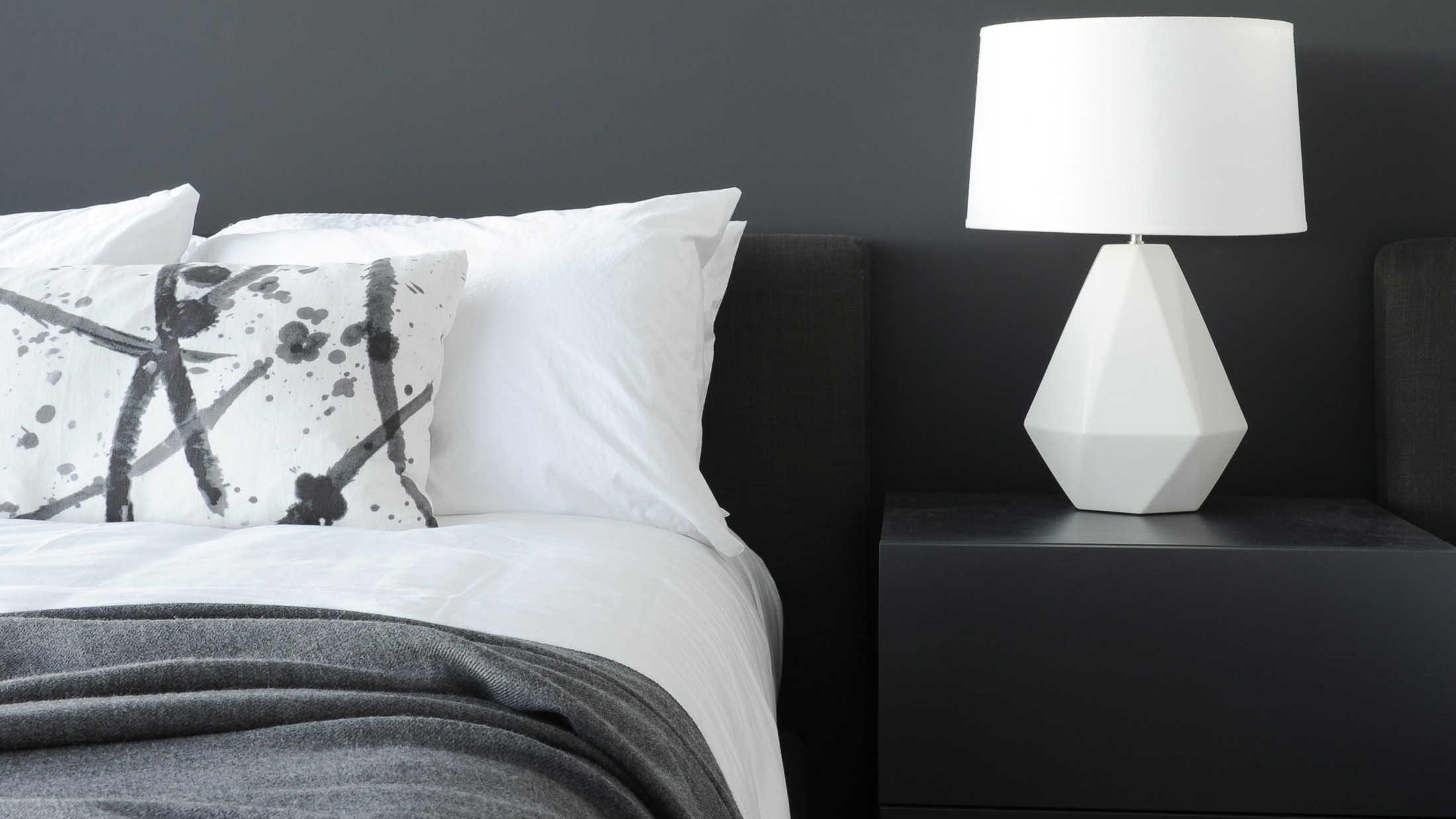
Photo by Tracey Ayton/Shift Interiors.
Avoid bold, bright colours like red and yellow, and stick with warm, neutral tones that are soothing, not stimulating. Designer Stephanie Brown recommends a palette of whites and greys: “It’s bright and airy during the day, and calming at night,” she says. “Sharp contrast, jarring colours, and patterns tend to grab our attention, and we can experience a physiological response that’s not exactly calming.”
Embrace natural textures
To create a cozy oasis, thoughtful textiles are a must. A large area rug or wall-to-wall wool carpet adds both texture and sound control. “It’s great to also pay attention to the tactile quality of materials on our beds, bedding, walls, and curtains,” says Brown; think velvet, or wool sateen.
Denise Ashmore of Project 22 Design suggests splurging on linen bedding: “I find natural materials provide the best rest,” she says. Deck agrees: “Never underestimate the power of natural fabric textures for your bed linens and accessories. Their breathable fibres and unique touch make a great difference in staying comfortable while sleeping.”
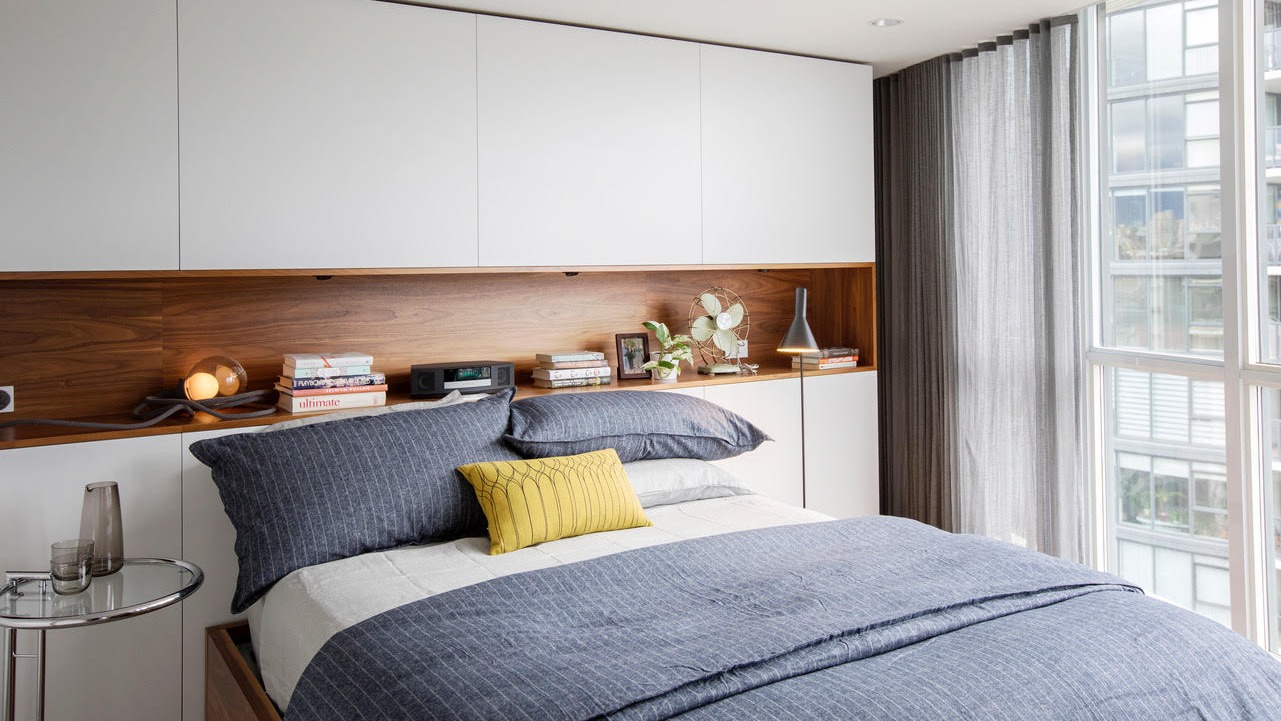
Photo by Ema Peter/Project 22.
Love your lighting
Natural light is essential in any space, but you’ll want to add other layers as well. As much as possible, lighting should be indirect and dimmable. (As Deck says, “Control is power.”) Brown suggests a decorative fixture for mood lighting, pot lights for maximum brightness, and bedside lamps for ambience or reading—all with dimmers, of course—while Deck recommends ceiling cove lighting and nightstand lamps as a great way to illuminate a space softly.
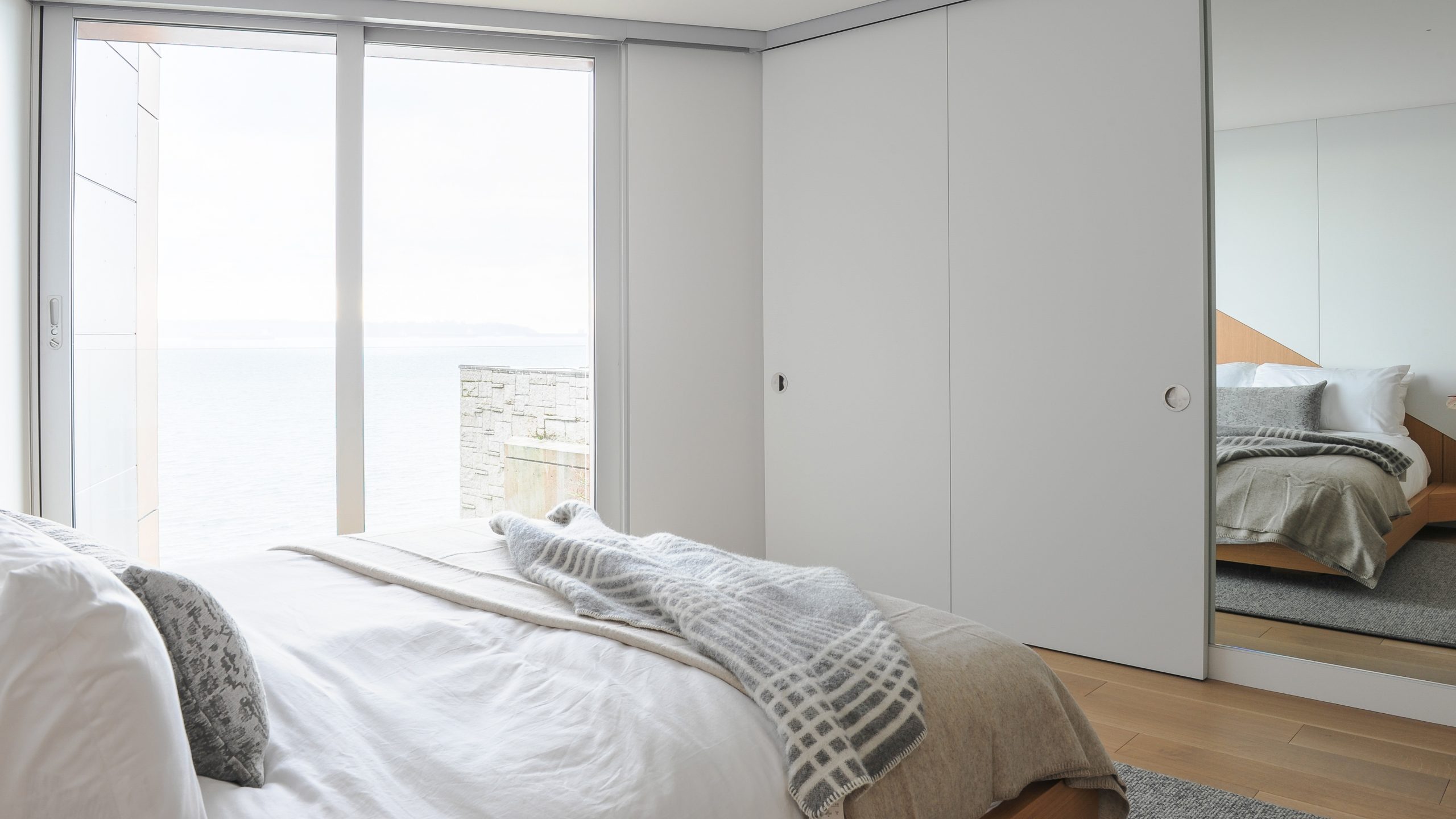
Photo by Tracey Ayton/Shift Interiors.
Whatever combination you choose, lighting should be warm, to mimic the spectrum of colour found in nature. Deck’s rule of thumb: never use a bulb with a colour temperature lower than 2,000K. That neutral colour scheme you’ve implemented will help here, too, allowing light to be reflected throughout the room.
Declutter your space to declutter your mind
“I don’t know about you, but for me, visual noise is not helpful in falling asleep,” says Ashmore. A clutter-free room is a restful room, so it’s time to get your tidy on. Clear surfaces, close closet doors at night, tackle organization problems, and make sure everything has a dedicated place to be kept out of sight—“especially those nagging chores like dirty laundry,” advises Brown.
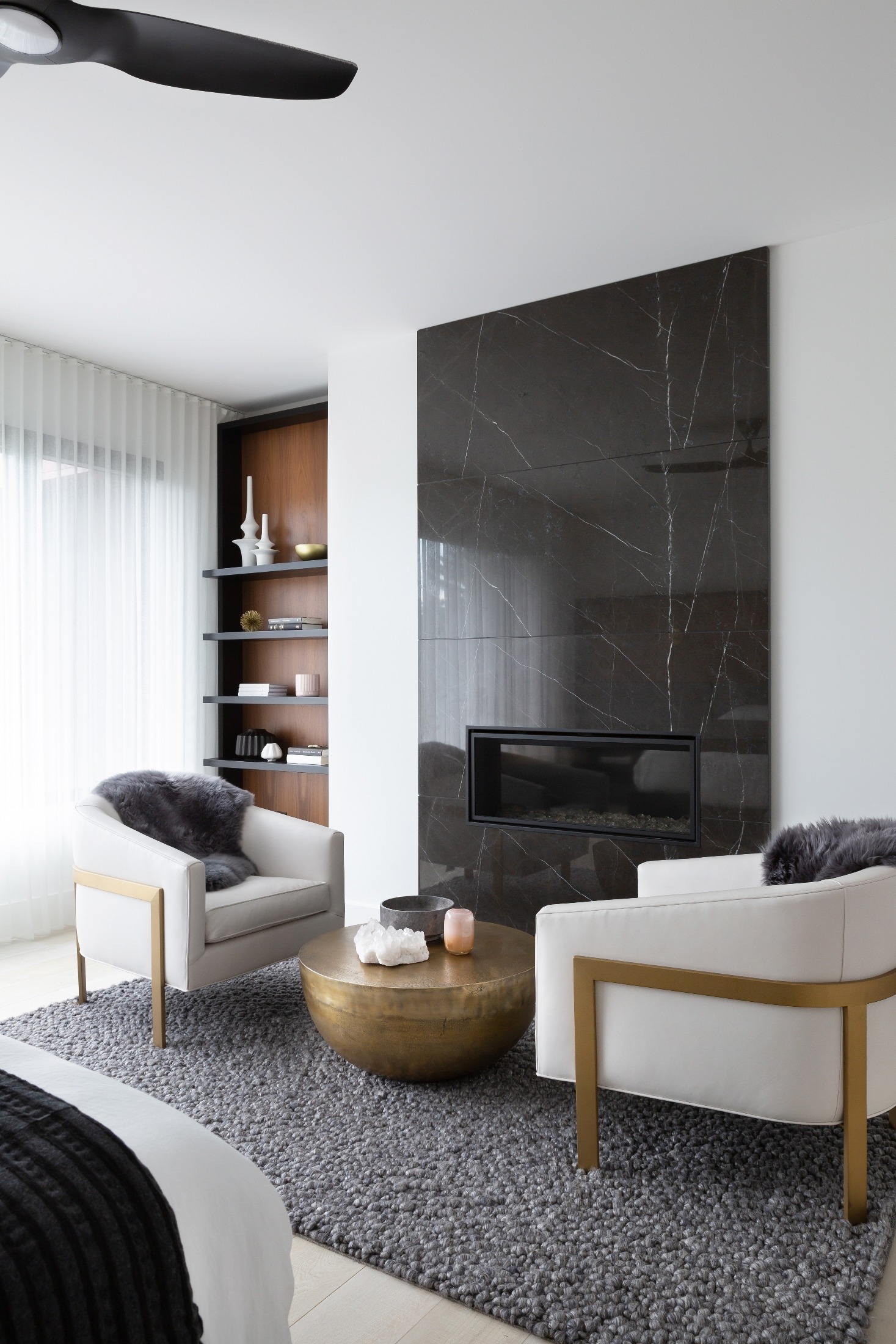
Photo by Phil Crozier/Stephanie Brown Inc.
Create a bed with a view
What do you look at from your bed? Curating a specific scene for you to see when you close or open your eyes is one helpful way to inspire a little serenity. “Consider that point of view,” says Brown. “Whether it’s incorporating some peaceful artwork on a blank wall or creating a nice vignette with a chair, lamp, and drapery, what you’re looking at before you fall asleep should be attractive, tidy, and calming.”
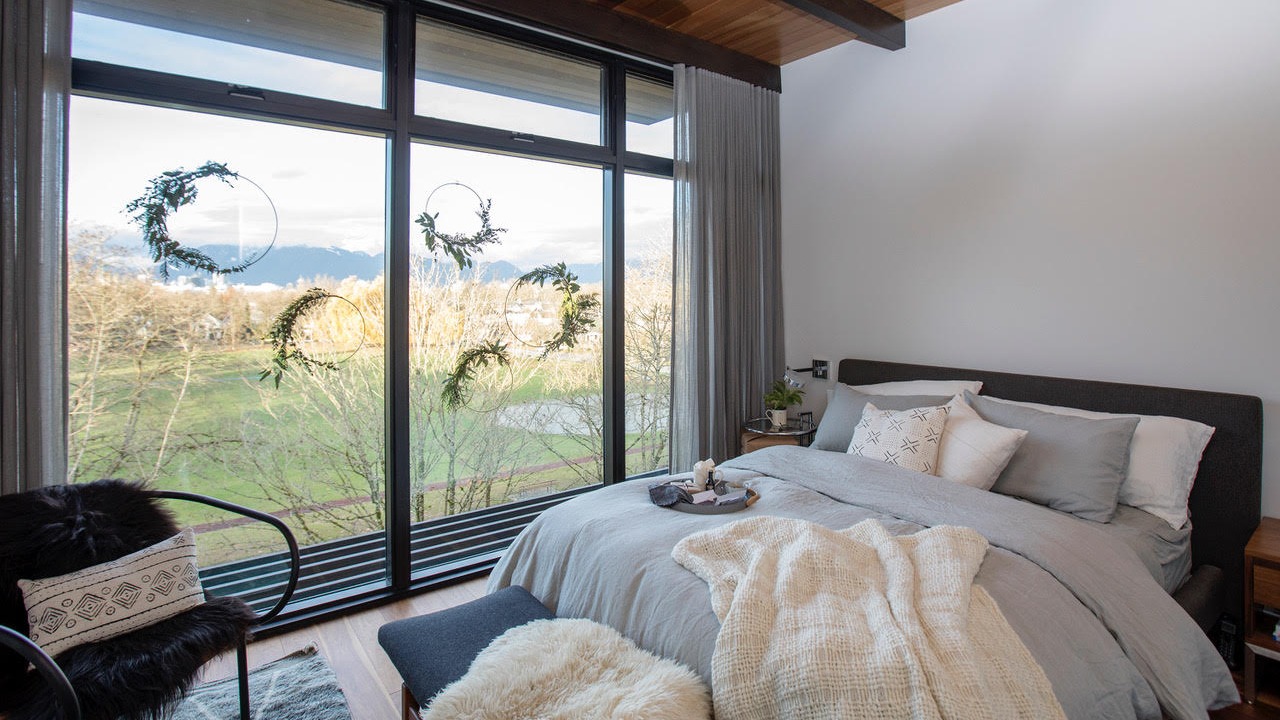
Photo by Janis Nicolay/Project 22.
Add dreamy drapery
“People underestimate the value and impact of window coverings,” says Brown. Blinds can control light and privacy (blackout blinds in particular are a great choice for light sleepers), but adding curtains to your window, too, is an opportunity to add softness and texture. (The fabric will also help dampen sound from outside, Brown points out.) Cotton or linen sheers will filter light beautifully, though Ashmore prefers linen again here: “It adds to sound absorption and the hotel feel,” she says. “It’s pure luxury.”
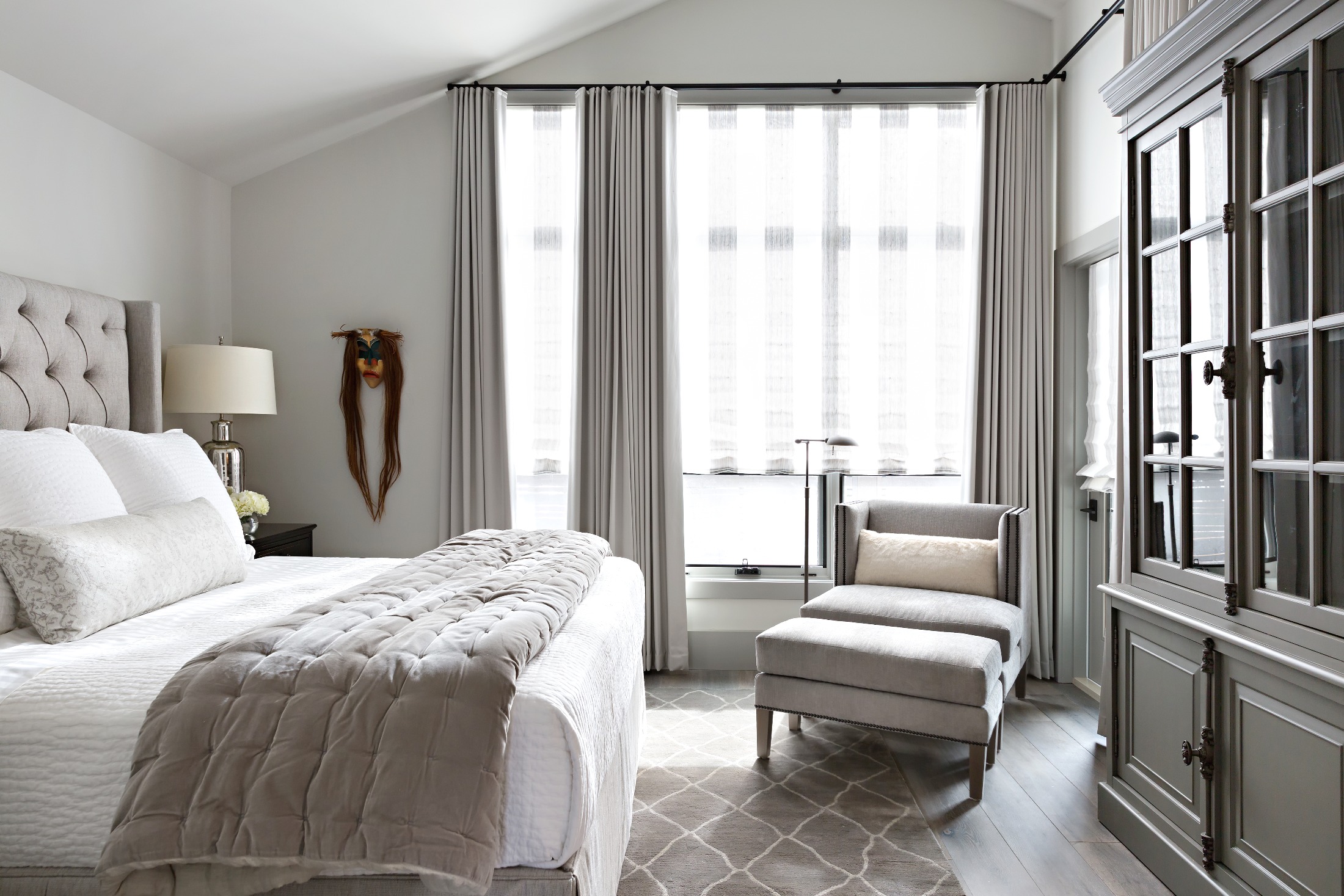
Photo by Phil Crozier/Stephanie Brown Inc.
Whatever your personal style, ultimately your bedroom should be a place of refuge: an oasis in a busy, stressful day (or an anxious, coronavirus-filled world). As Deck puts it, “To be cocooned and embraced by a room in your home allows you to peacefully navigate through the things that matter.” Happy cocooning.
This story from our archives was first published on May 5, 2020. Lay it all out in our Design section.

